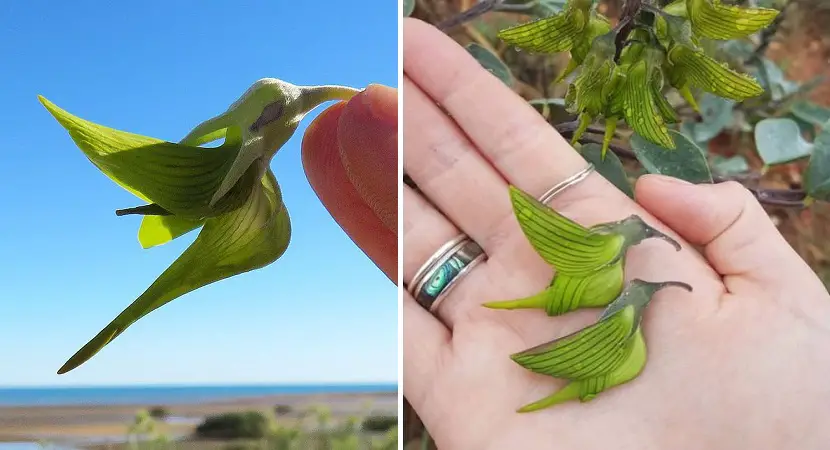Plants have a remarkable ability to bring peace and joy into our lives. Among the vast array of plant species, some display shapes and features that are truly extraordinary. One such marvel is the Crotalaria Cunninghamii, often referred to as the Royal Bird Flower. This fascinating plant, native to Australia, stands out not only for its beauty but also for its unique resemblance to hummingbirds.

The Royal Bird Flower

Crotalaria Cunninghamii is a shrub that thrives in Australia’s sandy dunes. It earns its nickname “Royal Bird” due to the distinctive appearance of its flowers, which resemble tiny hummingbirds clinging to the plant’s stem with their beaks. This striking visual mimicry is both captivating and functional.

This shrub can grow up to three meters tall and prefers a hot climate to flourish, as its seeds require warmth to germinate. It also demands a lot of water and well-drained soil to support its growth.
The plant’s branches are covered in a woolly texture, and its oval leaves can reach up to 3 cm in length. The flowers, which are much larger, feature fine black stripes, adding to their unique appearance.
Pollination and Visual Appeal

The shape of the Royal Bird Flower’s blooms plays a crucial role in its pollination process. Their bird-like form attracts real hummingbirds, which come to feed on the flowers. As they perch on the flowers, the hummingbirds inadvertently transfer pollen to other plants, aiding in cross-pollination and seed dispersal.
From a distance, these flowers can easily be mistaken for actual hummingbirds, showcasing nature’s ability to create astonishing visual similarities. The plant’s resemblance to birds is so convincing that it highlights how effectively nature uses mimicry for survival and reproduction.
Uses and Applications

Aside from its ornamental value, Crotalaria Cunninghamii has several practical uses:
- Ornamental Use: Due to its striking appearance, this plant is often used in decorative settings. It’s commonly placed in attractive containers to enhance the aesthetic appeal of a space for events or as a home decoration. However, it requires abundant sunlight to thrive, making it suitable for well-lit environments.
- Fiber Production: The plant is a significant source of fiber, which is utilized in the manufacture of paper pulp, ropes, and fishing nets. The high fiber content of Crotalaria Cunninghamii provides the necessary strength and quality for these products.
- Conservation Status: Due to its valuable fiber and the pressures of habitat loss, Crotalaria Cunninghamii is considered a protected species, with efforts in place to ensure its survival.
In conclusion, Crotalaria Cunninghamii is a remarkable plant with a beauty that mimics hummingbirds and serves multiple practical purposes. Its ornamental charm and utilitarian benefits make it a noteworthy addition to any garden or decorative arrangement, all while contributing to our understanding of nature’s wonders.



